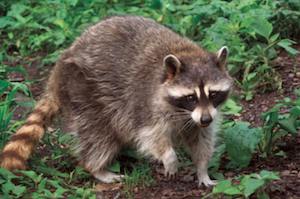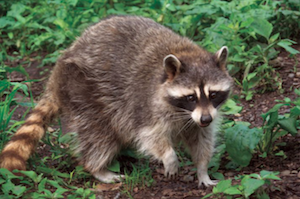Vaccination Prevents This Fatal Disease
by David Sauter, DVM

Rabies is a fatal viral disease and all mammals are susceptible. The virus is transmitted in the saliva of a rabid animal, often into a wound, but can also occur through contact with brain or nervous system tissue.
In the early 1900’s, over 100 people per year got infected and died from rabies in the United States. Today that number has declined to one to three people infected per year, even though there are many more people and pets. Vaccination and animal control programs, which started during the 1940s and 1950s, have been instrumental in producing these gains in rabies control in the United States.
Globally, however, the situation is much worse. The World Health Organization reports that tens of thousands of people die worldwide every year from rabies; ninety-nine percent of the cases are contracted from dog bite wounds, and four in ten of these deaths are children. Fortunately, because of effective vaccines, rabies is one hundred percent preventable.
With all of our efforts nationally, there are still 80-100 confirmed rabies cases in dogs each year in the U.S. The situation is worse with cats, probably because of the number of feral cats. Over 300 cat rabies cases are confirmed per year. There are fewer confirmed cases with livestock. For example, in 2014, there were 78 cattle cases, 25 horses, and 10 sheep or goats.
Other potential sources for people to be exposed to rabies are from exposure to wildlife, especially bats. Due to these human–animal interactions, there are 30,000 to 60,000 cases of post-exposure treatment of people per year. In many states, raccoons, skunks, fox and other ground mammals are sources of rabies.
In Washington State, bats are by far the biggest source of the rabies virus. Between three and ten percent of bats submitted for rabies testing are positive. The incidence in the general bat population is lower, estimated to be one percent. Two Whatcom County bats were confirmed infected with rabies in 2014, so we know the virus is present there. There have been five confirmed cases of rabies in domesticated animals in the state in the past 30 years – a dog in 1987, a horse in 1992, a llama in 1994, a cat in 2002 and another cat in 2015. During that time, there have been two human deaths in Washington from rabies – a four-year-old girl in 1995 and a 64-year-old man in 1997, both the result of contact with an infected bat.
Rabies symptoms in horses may look like some of the following: neurological signs such as an abnormal gait or limb paralysis, obscure lameness, behavioral changes, difficulty swallowing, and excessive drooling. They often have a fever, and may appear colicky.
There is an approved, safe, inexpensive and, most importantly, effective vaccine for horses, mules and donkeys. For these reasons and because the disease is fatal with enormous potential of exposure to humans, the American Association of Equine Practitioners has put rabies on the list of essential vaccines, recommended for all horses. Unlike regulations for dogs and cats, it is not mandatory by federal, state or local government to vaccinate horses for rabies, so the decision to vaccinate is left up to horse owners. Certainly, there is even greater reason to vaccinate any horses that are traveling out of state. Talk to your veterinarian if you have any questions or are interested in getting the rabies vaccination for your horse(s).
Originally Published June 2017 Issue

Dave Sauter is a Minnesota native and graduated from the University of Minnesota in 1987. Following graduation he interned at Rood and Riddle Equine Hospital in Lexington, Kentucky. After this internship, he continued to work exclusively with horses for another five years in Kentucky before moving out West and joining Kulshan Veterinary Hospital in Lynden, WA. He is a member of the AAEP, AVMA and the WSVMA. For more information about Kulshan Veterinary Hospital call 360-354-5095 or email [email protected]. www.KulshanVet.com





